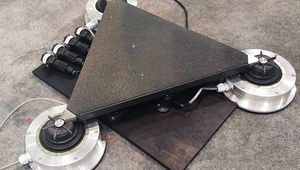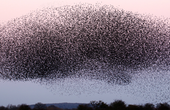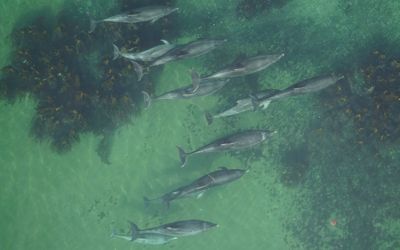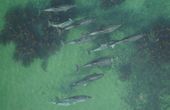Bioinspired dual-stiffness origami drone
An origami structure that has both high load bearing and high resilience characteristics. It's inspired by insect wings and consists of a prestretched elastomeric membrane like the soft resilient joints of insect wings, sandwiched between rigid tiles, akin to the rigid cuticle of insect wings. The dual-stiffness properties of the structure is validated by using the origami as an element of a quadcopter frame that can withstand aerodynamic forces within its flight envelope but softens during collisions to avoid permanent damage. The structure also has an origami gripper that can be used for rigid grasping but softens to avoid overloading of the manipulated objects.
Technical Specifications
| Weight | 30 |
| Width | 160 |
| Depth | 160 |
| Height | 30 |
| Materials | |
Overview
The dual-stiffness properties of the structure is validated by using the origami as an element of a quadcopter frame that can withstand aerodynamic forces within its flight envelope but softens during collisions to avoid permanent damage. The structure also has an origami gripper that can be used for rigid grasping but softens to avoid overloading of the manipulated objects.
The method consists of joined rigid tiles (equivalent to biological cuticles) with prestretched elastomer membranes (equivalent to resilin) positioned at strategic locations of the structure. The elastomer membrane (e.g., silicone or latex) is prestretched and sandwiched between rigid tiles (e.g., acrylic or fiberglass).
The compliant origami was applied to a pocket-sized quadcopter made of four foldable arms that can be wrapped around the main frame during storage and transportation. During flight, each arm assumed a deployed configuration with a triangle-shaped section constrained by resistive moments, which were generated by two couples of magnets placed in the arm and frame. Furthermore, the possibility to reversibly transition between rigid and soft states may be useful for frames and wings for drones that not only rigidly withstand flexural loads within a desired flight envelope but also fold to prevent damage when forces rapidly increase during collisions.
The flexural behavior of the arm is defined by the prestretched membrane and the specific crease pattern engraved in the arm, and it is essential for (i) withstanding loads within the flight envelope
for maneuverable and stable flights, and (ii) deflecting and (iii) subsequently buckling to preserve structural integrity during collisions when the external load rapidly increases.
Compliant origami gripper
The origami gripper has two additional folds. The compliant origami can firmly hold an object and behave like a rigid gripper. However, when the gripping force exceeded the threshold, the origami behaved like a soft gripper and conformed to the object, preventing overload without resorting to sensory feedback and active controllers. The force threshold causing the transition from rigid to soft can be changed by tuning the material properties of the membrane and the geometry of the folding pattern in the gripper. This behavior can be very useful for the precise and safe manipulation of fragile objects and living tissues. In addition, the simple and lightweight features and the relatively faster fabrication process of the compliant origami gripper make it advantageous in comparison with other soft grippers that are already out there.
References
Describes the background of the project, the mechanical properties of the compliant origami, and the results. Describes the crash-resilient and self-deployable quadcopter, and the compliant origami gripper. Also includes a discussion.


















